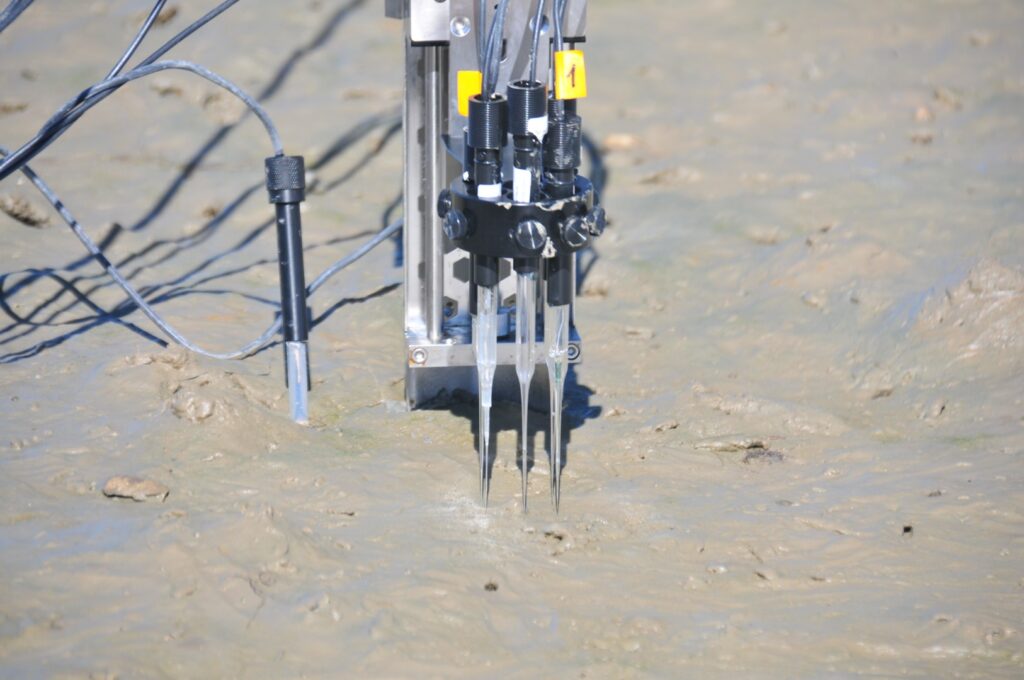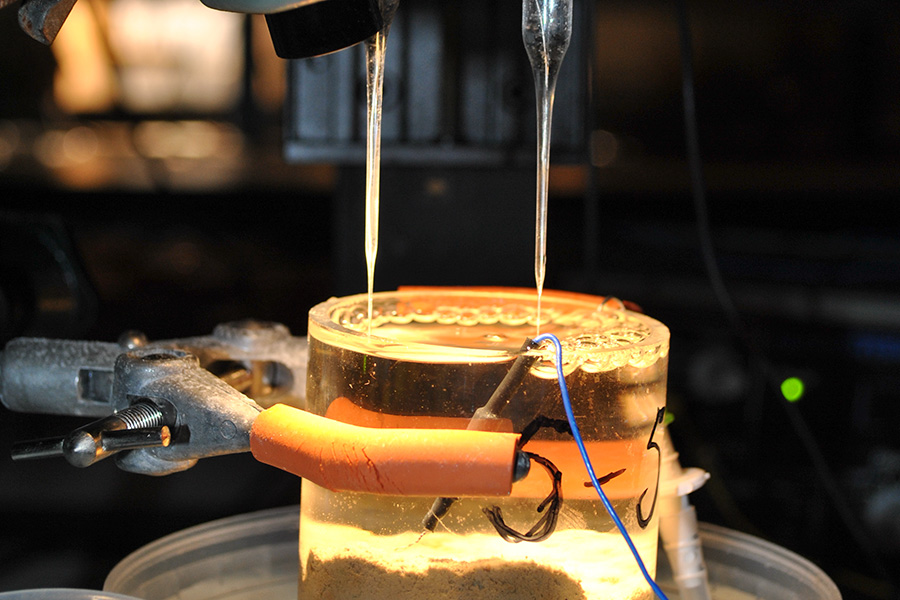The application of microsensors both electrochemical and optical is one of the strengths of our group.
Currently we have a system for the field and two systems for laboratory experiments.



Microsensors are highly specialized tools designed to measure extremely small changes in environmental variables right at the sediment-water interface, within biofilms or even tissues. In our case, we use these sensors for studying intertidal zones, where rapid fluctuations in conditions can influence key ecological processes. Microsensors provide precise and localized data, at the scale of a few microns, that are invaluable for understanding the dynamics of sediment biogeochemical processes in intertidal ecosystems.

Principles Behind Microsensors in Intertidal Zones
Microsensors are designed to measure specific variables like oxygen, pH, temperature, sulfide, and light at very fine spatial and temporal scales. Due to their small size (often only a few micrometers in diameter), these sensors can be inserted directly into the sediment and obtain vertical profiles of the measured variables. This setup allows them to detect small but significant gradients within the narrow boundary layers, where most biogeochemical interactions occur.

Microsensors work by using electrochemical or optical principles, depending on the variable being measured:
- Electrochemical sensors (such as oxygen microsensors, pH, sulfide) generate a small current in response to the concentration of a target molecule.
- Optical sensors (like those for oxygen) use specific dyes that fluoresce in response to different concentrations.
These measurements are taken at very high frequencies, often several times per second, enabling us to track rapid changes over short periods (of minutes).

What Microsensors Measure in Intertidal Systems
In intertidal environments, microsensors are used to measure among other possibilities:
- Oxygen: Key for understanding primary production and respiration. Oxygen microsensors can reveal precise changes in oxygen availability within the sediment caused by photosynthetic activity during daylight or respiration during night time.
- pH: pH microsensors help track acid-base fluctuations in the sediment and water, deriving from processes like photosynthesis and decomposition.
- Sulfide: Sulfide is a product of sulfate reduction, an important anaerobic respirations process. Thus, it is an important indicator of anaerobic microbial activity within sediments.
- Temperature: Fine temperature sensors allow monitoring of conditions, which can significantly impact metabolic rates in intertidal organisms.
- Light Intensity: Light microsensors help quantify the amount of sunlight reaching the sediment surface, a critical factor for photosynthesis in intertidal algae and other primary producers.

Advantages of Microsensors in Intertidal Ecosystems
Microsensors provide unique benefits for studying intertidal zones, where conditions vary dramatically due to tidal cycles, sunlight, and temperature. Some of the main advantages include:

- High Spatial and Temporal Resolution
Microsensors provide measurements at the micro-scale level, capturing gradients and rapid changes that cannot be captured by larger-scale instruments. This level of detail is crucial for intertidal zones, where processes can vary significantly over just a few millimeters and change rapidly with the tides. - Minimal Disturbance
Due to their small size (tip is usually 10-100 μm), microsensors can be inserted into sediment or water with minimal disturbance to the natural environment and capture the fine scale gradients without altering the in situ concentrations. Repeated measurements in the same spot is also possible due to the rapid recovery from the small physical disturbance produced by the hole produced. - In-Depth Analysis of Biogeochemical Processes
Microsensors allow researchers to quantify vital variables such a the depth of the oxic zone, the depth of the primary production microalgal community, the volumetric primary production rates, the diffusive fluxes within the sediment, gross primary production rates with depth etc. These insights are especially valuable in intertidal zones, where microbial and algal communities play a significant role in carbon cycling and nutrient exchange with the surrounding water.
In summary, microsensors are invaluable tools for studying intertidal zones. Their high precision and minimal impact make them perfect for capturing the small-scale, high-frequency changes characteristic of these environments.



